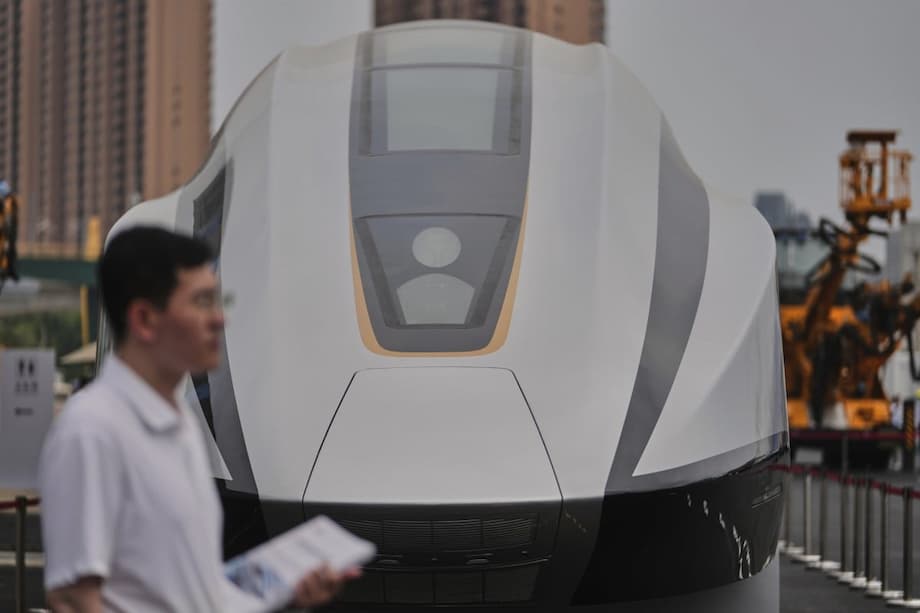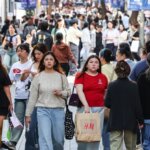China’s High-Speed Rail: A Marvel of Engineering Facing a Mountain of Debt
China’s high-speed rail (HSR) network is a symbol of the country’s rapid modernization and technological prowess. In less than two decades, China has built the world’s largest HSR system, stretching nearly 50,000 kilometers and connecting most major cities. Bullet trains now zip between Beijing and Shanghai in just four hours, and new maglev prototypes have reached speeds over 600 km/h. Yet, beneath the gleaming stations and record-breaking trains, the network faces mounting financial challenges, raising questions about its long-term sustainability and the wisdom of further expansion.
- China’s High-Speed Rail: A Marvel of Engineering Facing a Mountain of Debt
- How Did China Build the World’s Largest High-Speed Rail Network?
- Debt and Profitability: The Cracks Beneath the Surface
- Fare Hikes and Social Consequences
- Why Are So Many Lines Unprofitable?
- Comparisons and Lessons: Is High-Speed Rail Sustainable?
- Government Response and Future Outlook
- In Summary
How Did China Build the World’s Largest High-Speed Rail Network?
China’s HSR journey began in earnest in 2008, with the opening of its first high-speed passenger line. Since then, the government has poured trillions of yuan into expanding the network, linking 93% of cities with populations over 500,000 by 2021. The pace of construction has been extraordinary: by 2025, the network is projected to surpass 50,000 kilometers, dwarfing the combined HSR mileage of Germany, Japan, and the United Kingdom.
This expansion was driven by a mix of economic stimulus, national pride, and a desire to showcase China’s technological capabilities. The government saw HSR as a way to boost domestic demand, create jobs, and spur development in less prosperous regions. Provincial governments, eager to attract investment and raise their GDP figures, borrowed heavily to fund new lines and stations—even in remote areas with limited passenger demand.
China’s approach was ambitious: build first, and hope that economic growth and rising incomes would eventually fill the trains. The result is a network that is both a marvel of engineering and a source of growing financial strain.
Debt and Profitability: The Cracks Beneath the Surface
Despite its technological success, China’s HSR network is struggling financially. The operator, China State Railway Group, reported a net profit of 3.3 billion yuan (about $457 million) in 2023, marking its best operating performance in history. However, this profit is dwarfed by the network’s debt, which reached 6.2 trillion yuan (nearly $860 billion) by the end of 2024. To put this in perspective, the debt from HSR expansion now exceeds that of the troubled real estate giant Evergrande Group.
Most of the network’s revenue comes from passenger fares, as high-speed trains are not suitable for carrying freight. Yet, only a handful of lines—mainly in wealthy coastal regions like Beijing-Shanghai and Guangzhou-Shenzhen—are profitable. The majority of routes, especially those in inland provinces, operate at a loss due to low ridership and high maintenance costs. According to analysts, only about 6% of the network was profitable at the end of 2023.
Operating profits, when they occur, do not account for the massive debt incurred during construction. As Wang Kuo-chen, an assistant researcher at the Chung-Hua Institution for Economic Research in Taipei, explained, “The increase in ticket prices can cover only general income but will not help the deficit in fixed asset investment, which must be filled by real estate. However, China’s housing market is sluggish and cannot be used to support high-speed rail.”
China Railway finances its expansion by selling bonds to state-owned banks and brokerages, effectively allowing the government to borrow without increasing the official national debt. This “hidden debt” strategy has enabled rapid growth, but it also means that the financial risks are spread across the public sector, making them harder to track and manage.
Fare Hikes and Social Consequences
In June 2024, China Railway announced fare increases of 20% to 40% on four major high-speed routes, including the profitable Beijing-Guangzhou and Shanghai-Kunming lines. This move, the largest price hike since the network’s inception, was intended to offset rising operating costs and subsidize loss-making routes. It also reflects broader economic pressures, as local governments face shrinking revenues and rising debts amid a slowing economy and a deflating real estate market.
The fare hikes have sparked public criticism and concerns about social exclusion. While business travelers and white-collar workers—often reimbursed by their employers—can absorb the higher costs, many ordinary Chinese find high-speed rail increasingly unaffordable. Research indicates that about a quarter of the population avoids using HSR due to low incomes. During peak travel periods like the Spring Festival, many migrant workers opt for slower, cheaper trains, as high-speed fares can equal one or two days’ wages.
On social media platforms such as Douyin and Weibo, users have voiced frustration. One commenter wrote, “Wealth has nothing to do with me, but I have to share all the suffering.” Lynn Ling, a writer who migrated from Chengdu to Taiwan, noted, “The price increase adds insult to injury as wages drop and daily necessities become more expensive.”
Experts warn that fare hikes may deepen social exclusion, as public funds and loans finance the system, but only wealthier groups can afford to use it regularly. The government faces a dilemma: raising fares to improve finances risks pricing out ordinary citizens, while keeping fares low perpetuates financial losses and mounting debt.
Why Are So Many Lines Unprofitable?
The financial woes of China’s HSR network are rooted in its rapid, politically driven expansion. Many new lines and stations were built in remote or sparsely populated areas as part of stimulus packages, with little regard for cost-benefit analysis or long-term demand. Since 2010, more than 20 high-speed rail stations have been closed or left unused due to low passenger traffic, especially in inland provinces.
High-speed rail is expensive to build and maintain. Each kilometer of track costs 120 to 130 million yuan, nearly three times more than traditional rail. The infrastructure must be maintained to extremely precise standards, and the trains themselves require frequent, costly upkeep. Unlike conventional rail, HSR cannot carry freight, limiting its revenue streams to passenger fares alone.
As Zhao Jian, a professor at Beijing Jiaotong University, explained, “Many newly built HSR lines should not have been built, if assessed according to the standards set by the central government.” He added that China, as a manufacturing powerhouse, needs greater freight capacity—something HSR cannot provide.
Political goals often outweighed considerations of profitability. Local governments saw HSR as a way to stimulate economic development and boost property values, leading to overinvestment and the construction of stations in inconvenient or underpopulated locations. With the collapse of the real estate market, many of these stations now sit empty, and local governments are struggling to repay the loans that funded their construction.
Comparisons and Lessons: Is High-Speed Rail Sustainable?
China’s HSR experience offers important lessons for other countries considering similar projects. In the United States, for example, high-speed rail proposals have faced criticism for their high costs, limited ridership, and questionable environmental benefits. As a Cato Institute analysis noted, high-speed trains require dedicated infrastructure that cannot be shared with freight or other uses, making them less cost-effective than highways or conventional rail.
In China, the focus on HSR has come at the expense of traditional rail systems, affecting the country’s logistics balance. While HSR has brought undeniable social and developmental benefits—connecting remote regions, reducing travel times, and showcasing Chinese technology—its commercial returns remain elusive. Only the busiest lines are profitable, and even these are expected to take decades to recover their initial investments.
Some analysts argue that the network’s value should be measured in social rather than financial terms. HSR has improved mobility, reduced regional disparities, and provided a sense of national pride. However, as debt mounts and economic growth slows, the government is under increasing pressure to prioritize financial sustainability over further expansion.
Government Response and Future Outlook
Recognizing the risks, Chinese authorities have begun to rein in HSR expansion. President Xi Jinping has reportedly ordered a halt to unnecessary new lines, warning that unfinished projects could further depress housing prices and create a vicious cycle of debt and underuse. The government has also tightened approval criteria for new infrastructure projects, focusing on economically robust regions and projects with clear demand.
To improve the network’s finances, China Railway has adjusted timetables, lowered fares in remote areas, and sought private investment by listing subsidiaries. However, these measures are unlikely to significantly reduce the debt burden or make unprofitable lines viable. Suggestions for reform include raising fares further, reducing the number of stations, and improving governance, but these are politically sensitive and difficult to implement.
Despite these challenges, China’s HSR network continues to expand, with another 2,600 kilometers of track planned for 2025. The government hopes that increased passenger and cargo transport will boost revenue and that exporting Chinese HSR technology overseas will create new opportunities. Yet, the fundamental question remains: can the world’s largest high-speed rail system become financially sustainable, or will it remain a costly symbol of ambition and overreach?
In Summary
- China’s high-speed rail network is the largest in the world, with nearly 50,000 kilometers of track and plans to surpass 50,000 km in 2025.
- The network faces mounting debt, with total liabilities reaching 6.2 trillion yuan (about $860 billion) by the end of 2024.
- Only a small portion of lines—mainly in coastal cities—are profitable; most routes operate at a loss due to low ridership and high maintenance costs.
- Recent fare hikes aim to offset rising costs but risk making HSR unaffordable for many ordinary Chinese, deepening social exclusion.
- Many stations in remote areas are underused or abandoned, reflecting overinvestment and politically driven expansion.
- The government is tightening approval for new projects and seeking reforms, but financial sustainability remains elusive.
- China’s HSR offers social and developmental benefits, but its commercial returns are limited, raising questions about the future of large-scale infrastructure investment.












